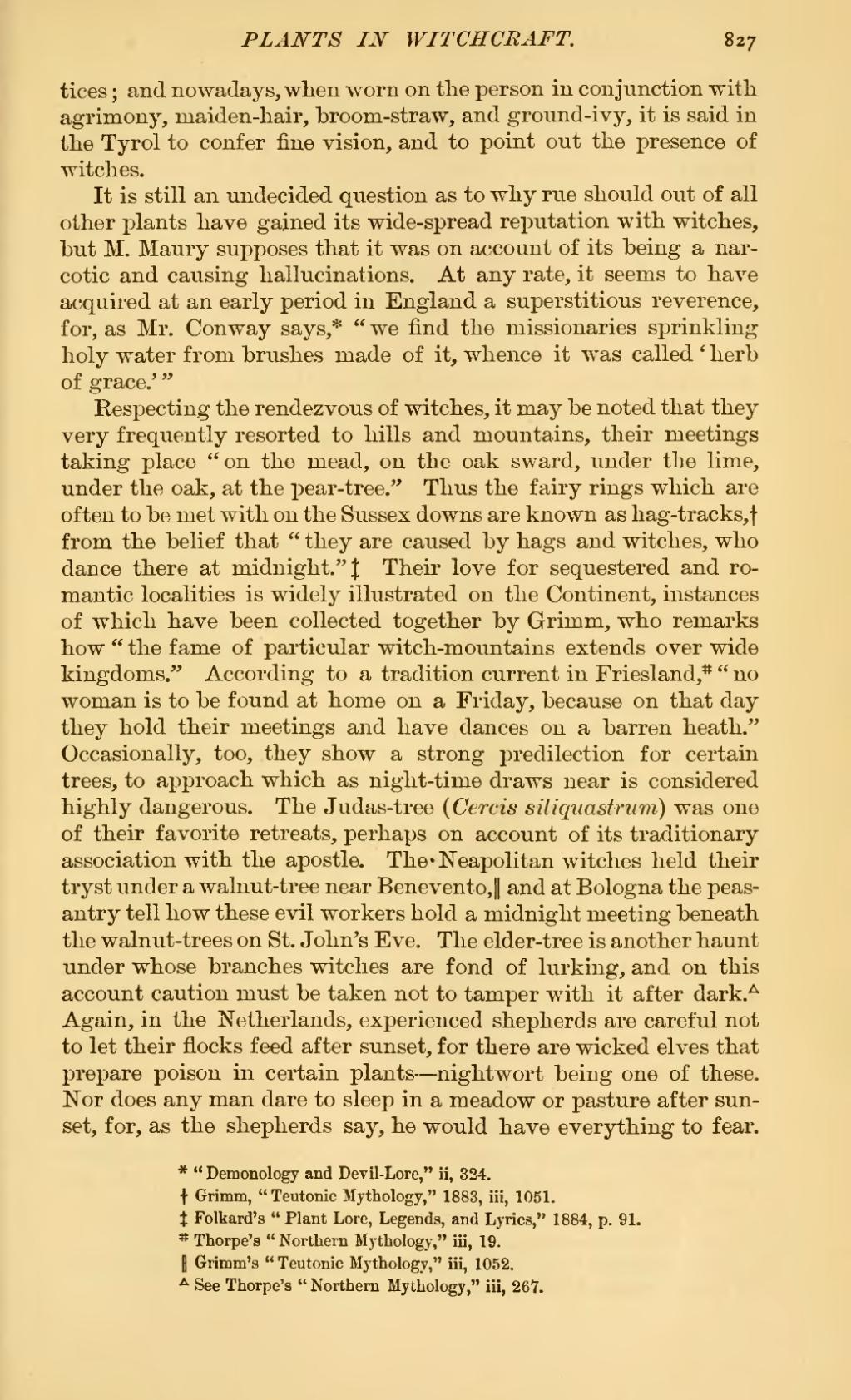tices; and nowadays, when worn on the person in conjunction with agrimony, maiden-hair, broom-straw, and ground-ivy, it is said in the Tyrol to confer line vision, and to point out the presence of witches.
It is still an undecided question as to why rue should out of all other plants have gained its wide-spread reputation with witches, but M. Maury supposes that it was on account of its being a narcotic and causing hallucinations. At any rate, it seems to have acquired at an early period in England a superstitious reverence, for, as Mr. Conway says,[1] "we find the missionaries sprinkling holy water from brushes made of it, whence it was called 'herb of grace.'"
Respecting the rendezvous of witches, it may be noted that they very frequently resorted to hills and mountains, their meetings taking place "on the mead, on the oak sward, under the lime, under the oak, at the pear-tree." Thus the fairy rings which are often to be met with on the Sussex downs are known as hag-tracks,[2] from the belief that "they are caused by hags and witches, who dance there at midnight."[3] Their love for sequestered and romantic localities is widely illustrated on the Continent, instances of which have been collected together by Grimm, who remarks how "the fame of particular witch-mountains extends over wide kingdoms." According to a tradition current in Friesland,[4] "no woman is to be found at home on a Friday, because on that day they hold their meetings and have dances on a barren heath." Occasionally, too, they show a strong predilection for certain trees, to approach which as night-time draws near is considered highly dangerous. The Judas-tree (Cercis siliquastrum) was one of their favorite retreats, perhaps on account of its traditionary association with the apostle. The Neapolitan witches held their tryst under a walnut-tree near Benevento,[5] and at Bologna the peasantry tell how these evil workers hold a midnight meeting beneath the walnut-trees on St. John's Eve. The elder-tree is another haunt under whose branches witches are fond of lurking, and on this account caution must be taken not to tamper with it after dark."[6] Again, in the Netherlands, experienced shepherds are careful not to let their flocks feed after sunset, for there are wicked elves that prepare poison in certain plants—nightwort being one of these. Nor does any man dare to sleep in a meadow or pasture after sunset, for, as the shepherds say, he would have everything to fear.
